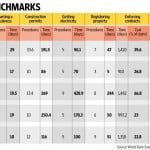
The company has charted a new course with a plethora of new product launches (utility vehicles) backed by new marketing and aggressive pricing strategies. Photo: Ramesh Pathania/Mint
Maruti Suzuki India Ltd more than satisfied investors on all counts with its stellar September quarter results. A strong 13.2% growth in net revenue and an even better 42% surge in net profit were good enough for the stock to spike 2.4%. What’s more, investors are optimistic the country’s biggest car maker will continue to be an outperformer in the auto pack in the near term.
Bloomberg consensus estimates indicate a 30% compound annual growth rate in net profit between fiscal year 2015 and 2017. That is a high rate of growth, but while there are many reasons for the optimism, there are several risks as well.
One, Maruti Suzuki has charted a new course with a plethora of new product launches (utility vehicles) backed by new marketing and aggressive pricing strategies. Come festive season, the next three months could see a bump-up in sales, especially given the low fuel prices and the slide in consumer finance rates. The Street has pencilled in a 12-13% volume growth in fiscal year 2016 and 16-17% in the following year.
Yes, the company bucked the sluggish sales trend by driving in a 12% growth in domestic deliveries during the September quarter. But some of this came from the new launches. Exports, which remain at 10% of total sales, fell short of expectations in the quarter.

Besides, rural growth continues to be sluggish. The management said that growth tapered from 15% in the June quarter to 10%. Any further decline is a big risk for Maruti Suzuki because nearly 30% of its sales accrue from rural areas. Added to this, the success of its new launches is yet to be established.
Two, the Street is euphoric with the margin improvement that appears sustainable. September quarter’s operating margin of 16.3% was a tad higher than Bloomberg’s analysts’ consensus forecast and about 393 basis points above the year-ago period. Importantly, it was almost 16% for the third consecutive quarter, prior to which it was around 12-13%. One basis point is 0.01%.
Better realization, better economies of scale on higher sales volume, improved product mix, cost control and benign raw material prices that trickled down to boost profitability are the reasons the Street believes would help sustain margins. These reasons aided the 49% jump in operating profit to Rs.2,269 crore in the quarter.
However, the next couple of quarters may see higher marketing and ad spending by the company to promote its new fleet, eating into operating margins.
An earlier report by Phillip Capital said Maruti Suzuki was in the midst of its best model cycle, steady decline in discounts and improvement in market share. But the average discount this quarter was significantly higher than the June quarter, although lower than the year-ago period. This indicates that demand is still not strong.
Three, analysts say that over the longer term, conscious efforts by the company to increase in-house research and development will ease the royalty paid as a percentage of sales, which is now around 5.5%. A Nomura report says that benefits of paying royalty in rupees as opposed to Japanese yen would also minimize foreign exchange risks.
At Rs.4,494.60 apiece, Maruti Suzuki shares trade at a fair valuation of 20 times the estimated fiscal year 2017 earnings per share. It reflects higher investor optimism than what was seen after the June quarter results, when market challenges were higher and the stock valuation was a lower at 17. A re-rating of the stock has already happened. Therefore, only earnings growth would be the key driver for stock appreciation hereafter. And this hinges largely on sales traction, especially in fiscal year 2017.
The writer does not own shares in the above-mentioned companies.
[“source -livemint”]




